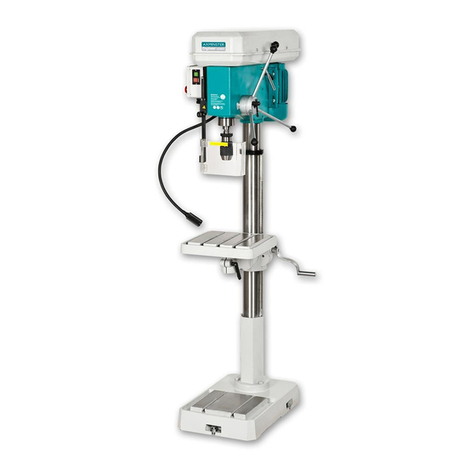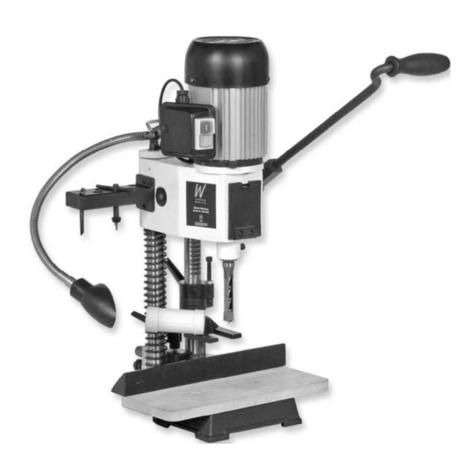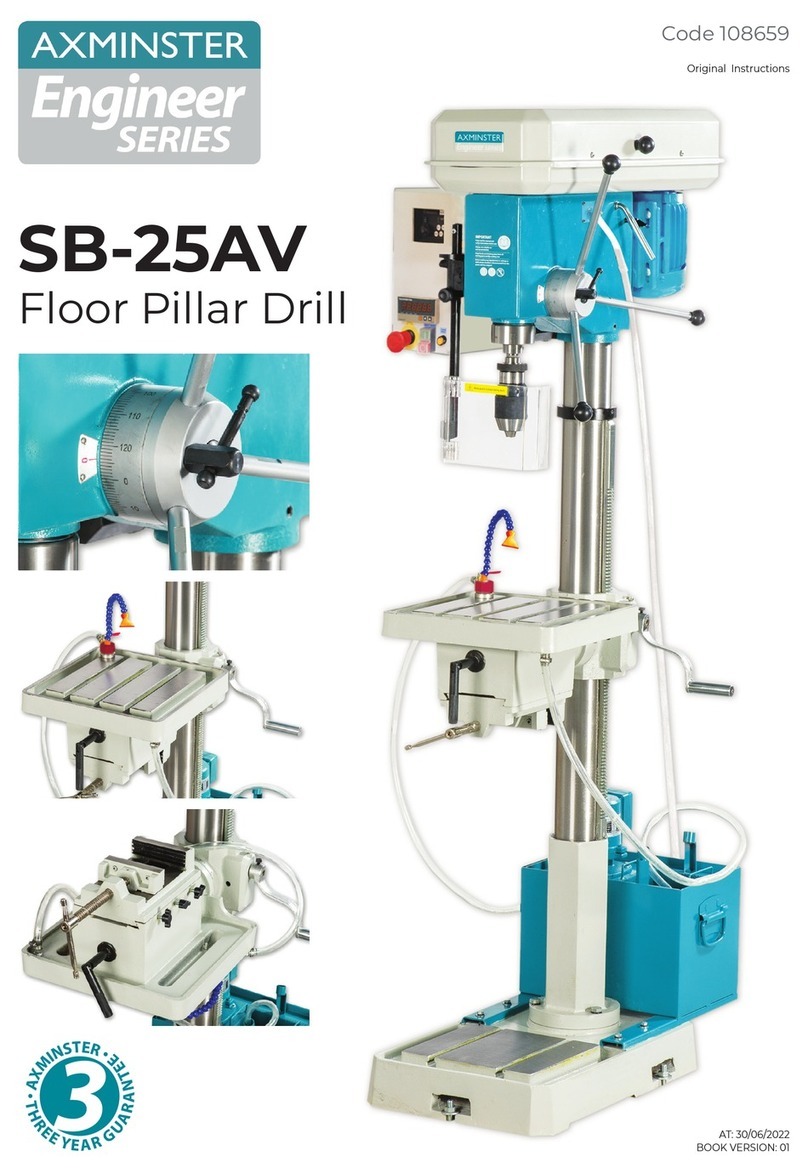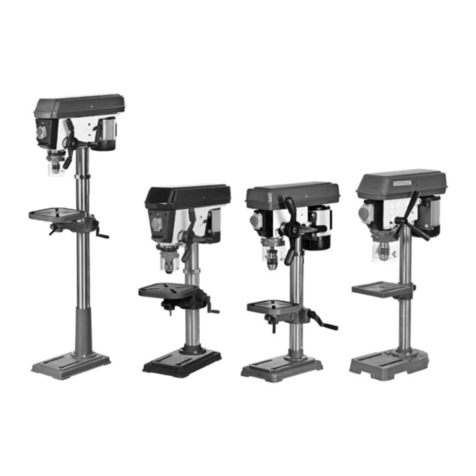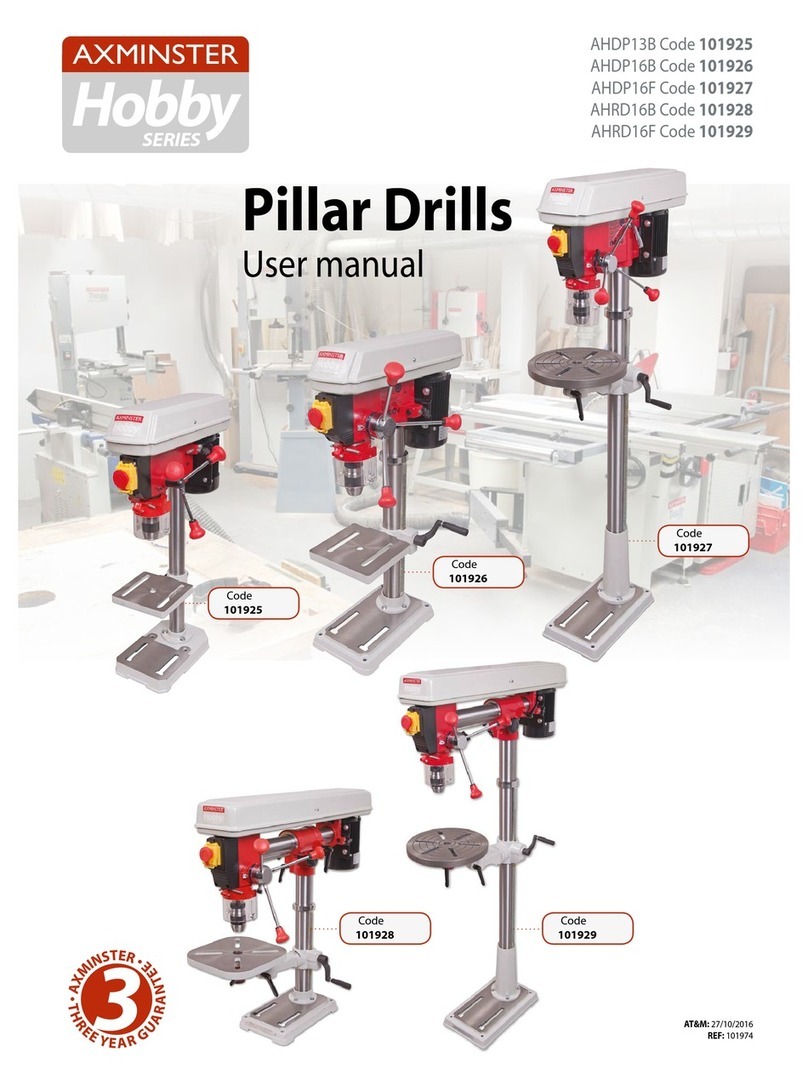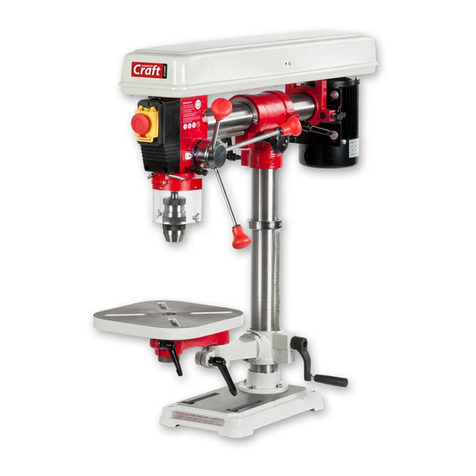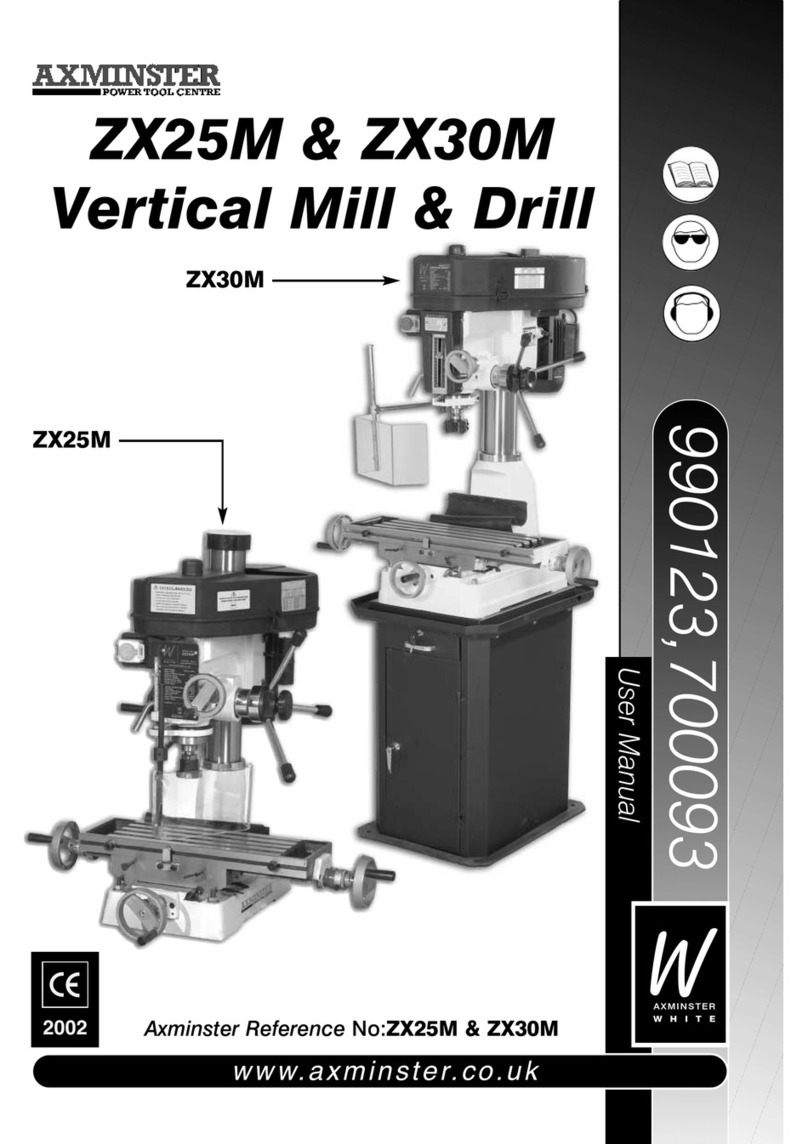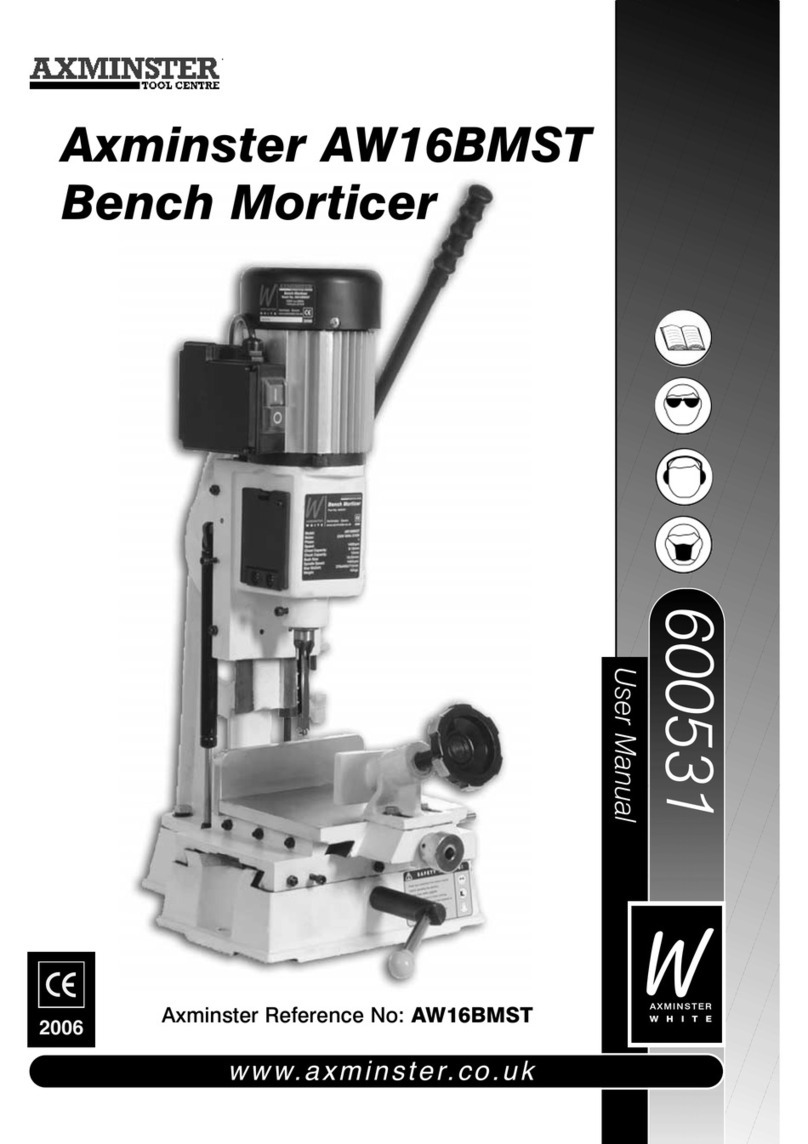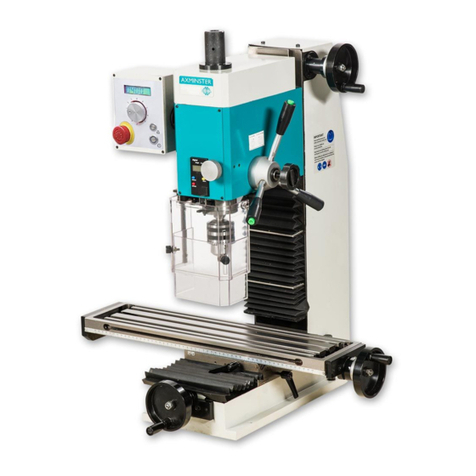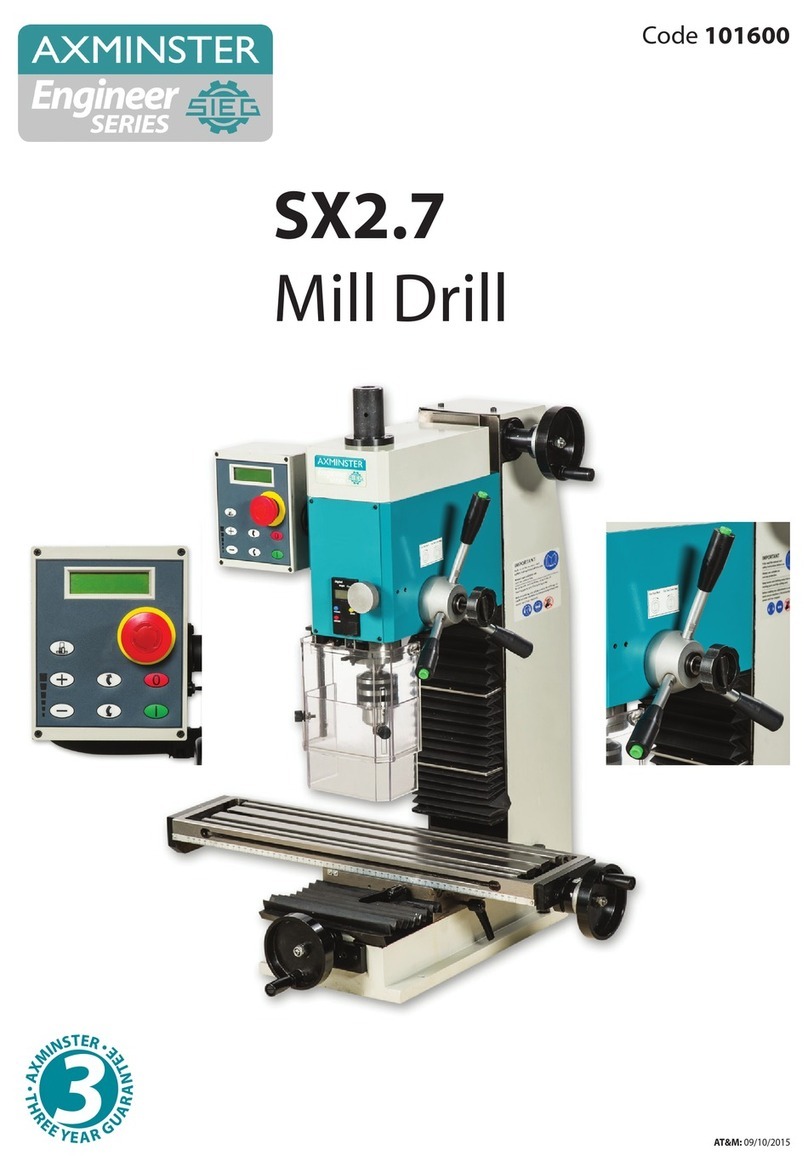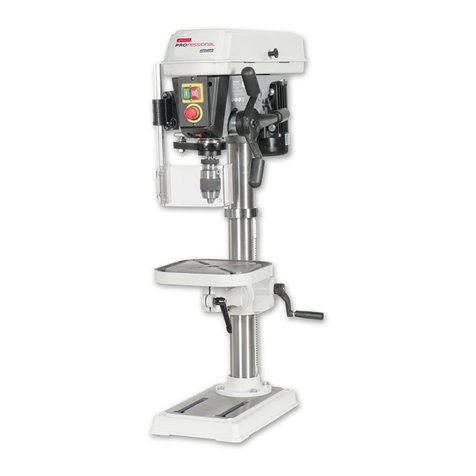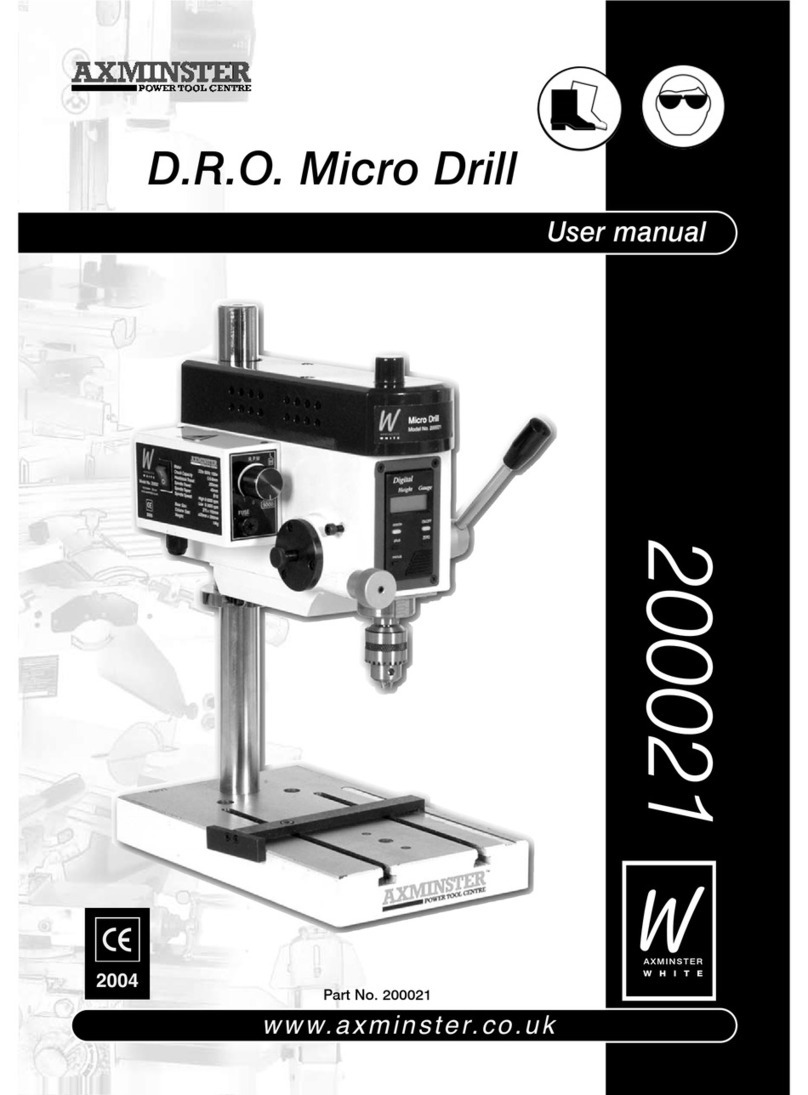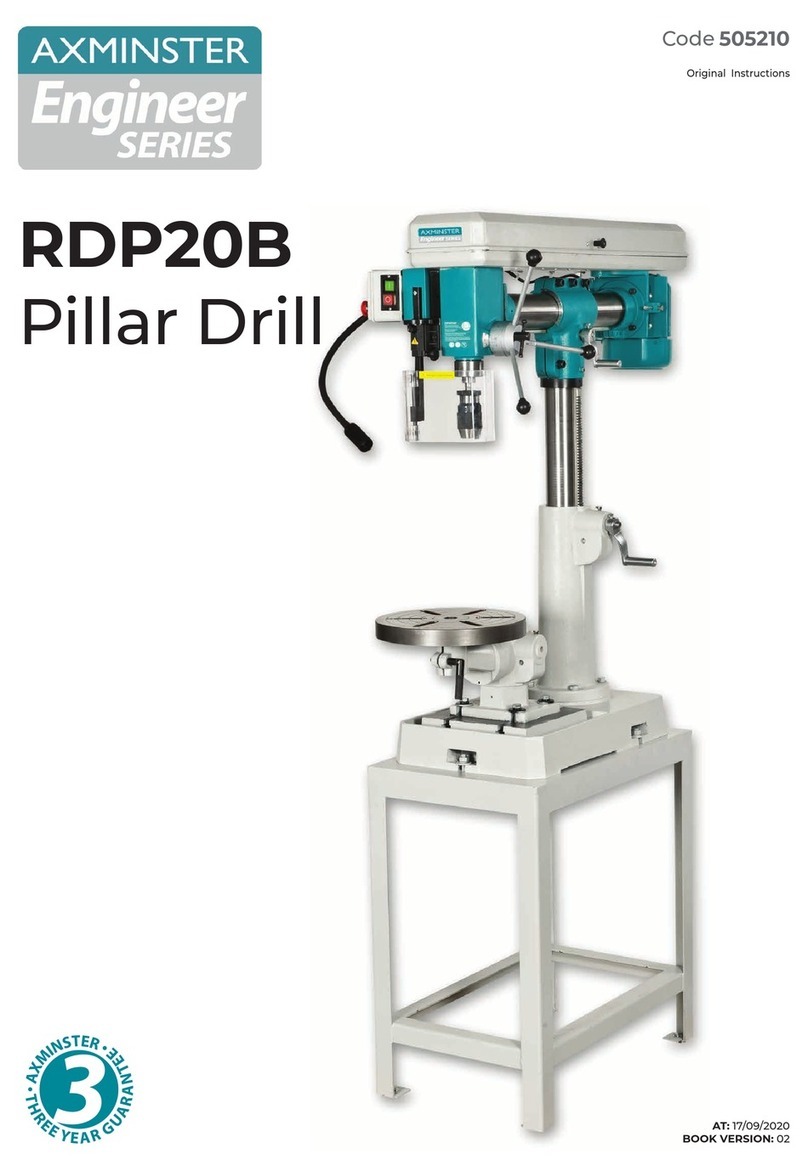General Safety Instructions
6
It is good practice to leave the machine unplugged
until work is about to commence, also make sure to
unplug the machine when it is not in use, or
unattended. Always disconnect by pulling on
the plug body and not the cable.
Once you are ready to commence work, remove any
tools used in the setting operations (if any) and place
safely out of the way. Re-connect the machine. Carry
out a final check e.g. check the drill bit is securely
tightened in the machine, check you have the correct
speed and function set, check that the power cable
will not ‘snag’ etc.
Make sure you are comfortable before you start
work, balanced, not reaching etc. If the work you are
carrying out is liable to generate flying grit, dust or
chips, wear the appropriate safety clothing, goggles,
gloves, masks etc., If the work operation appears to
be excessively noisy, wear ear-defenders. If you wear
your hair in a long style, wearing a cap, safety helmet,
hairnet, even a sweatband, will minimise the
possibility of your hair being caught up in the
rotating parts of the machine, likewise,consideration
should be given to the removal of rings and
wristwatches, if these are liable to be a ‘snag’ hazard.
Consideration should also be given to non-slip
footwear, etc.
DO NOT work with cutting or boring tools of any
description if you are tired, your attention is
wandering or you are being subjected to distraction.
A deep cut, a lost fingertip or worse; is not worth it!
DO NOT use this machine within the designated
safety areas of flammable liquid stores or in
areas where there may be volatile gases.There are
very expensive, very specialised machines for
working in these areas, THIS IS NOT ONE OF THEM.
CHECK that drills are the correct type and size, are
undamaged and are kept clean and sharp, this will
maintain their operating performance and lessen
the loading on the machine. Above all, OBSERVE….
make sure you know what is happening around you,
and USE YOUR COMMON SENSE.
General Safety Instructions for Drilling Machines
1. Do not operate the machine without carrying out
a preliminary inspection.
2. Check that the speed is correct for the planned
operation, and the upper drive belt cover is closed
and fastened secure.
3. Check the drill bit is the correct size and type, is
correctly fitted and tightened in the chuck.
4. Make sure that the drillhead, the table bracket
arm, the table tilt and the table swivel clamps are all
locked before any drilling is attempted.
5. Do not attempt to carry out any drilling operation
on material that has not been secured to the drill
table, either by vise or clamp.
6. Remove any tools (chuck key, spanners etc), that
may have been used in setting up operations and
put them away in their correct stowage positions.
7.Try to arrange the drilling operation so that the
drill tip does not come in contact with the table.
8. Always allow the drill to stop before removing
drillings or swarf from around the job or the table.
9. NEVER remove ‘flying’ swarf strands from the drill
whilst it is turning.
10. It is a good precaution to wear eye protection
when drilling, especially using small drills, or very
hard material that produces small chips.
11. It is not a good idea to wear gloves when
operating a drill press.
12. After the job is completed, remove all tools and
accessories from the machine, check that drill bits
are still sharp and re-use able.
13. Clean the machine down thoroughly, including
removing coolant or cutting compounds from the
drill table.
14. Lightly coat all metal surfaces with a light oil
coating.
15. Disconnect the machine from the supply. Secure
the cable/plug clear of the floor.
